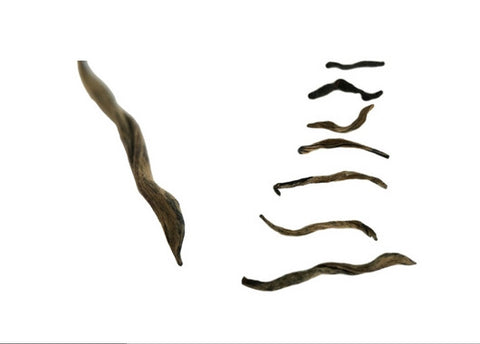Second Flush Hand Rolled Himalayan Tips - black tea
$3.95

| Style | Black Tea | |
| Origin | Jun Chiyabari, Hile, Dhankuta district, Eastern Himalayas, Nepal | |
| Season | Early May 14 | |
| Altitude | 1500m | |
| Batch | JCB2: 16kg micro lot |
This handpicked, hand rolled black Nepalese tea is labour intensive and tricky to produce. Brisk liquor, biscuity top notes and a hint of fresh-baked bread. It’s like a pleasing little pitter-patter of feet on the palate.

The Stories We Drink
|
This tea is from Jun Chiyabari, a small and exclusive organic estate in Nepal’s eastern Himalayas. The garden sits high in the hills of Hile, a small town in the Dhankuta district. The garden is young and was established from scratch in 2001. The harvests are small and limited in quantity. Second Flush Hand Rolled Himalayan Tips is a black tea that is hand plucked and hand rolled. Second flush teas are generally stronger in flavour and many experts agree that some of the very best tea is made from second flush leaves. We certainly think so. These leaves are wonderfully mature and have excellent consistency. This tea caught our attention because it’s tricky to pin down and is excellent representation of seasonality. It’s a bit like buying fresh fruit or vegetables. A juicy mango in season is magnificent. A plump peach at its peak is perfect. There’s a point at which produce really comes into its own and tastes amazing. That’s what’s going on with this second flush tea. Jun Chiyabari’s vision is to shy away from mediocre, machine processed, volume-based production, an approach common in neighbouring tea regions and standard at many estates. This innovation and labour intensive approach is evident on the palate. With just a very small micro lot produced, there’s a chance of blink and you’ll miss it. Jun Chiyabari is certified Organic under EU, NOP USDA-ORG and JAS standards. You can read more here. |
|
Craftsmanship
























